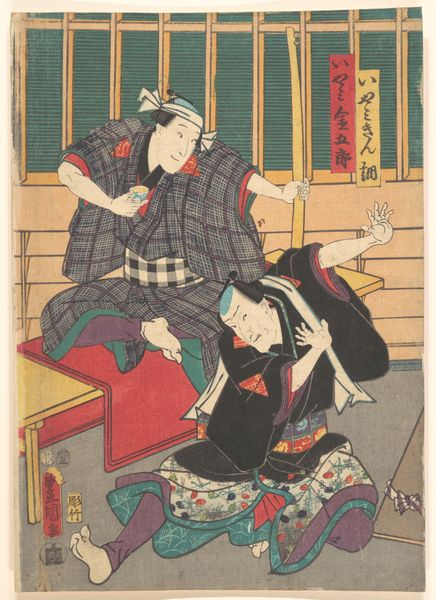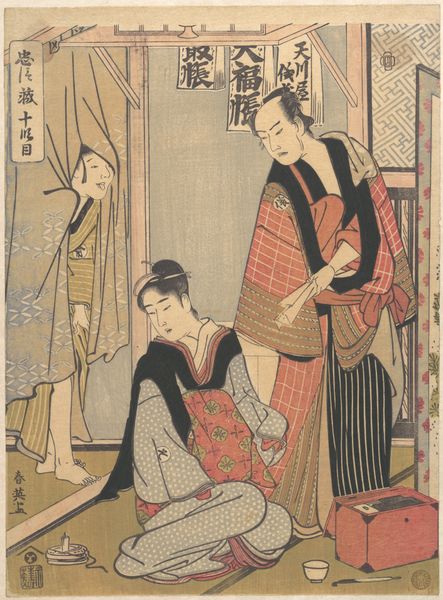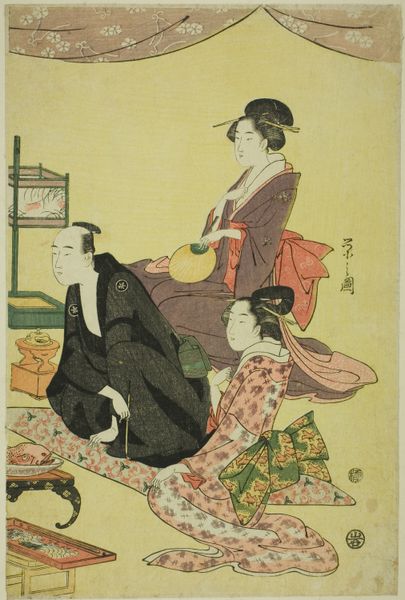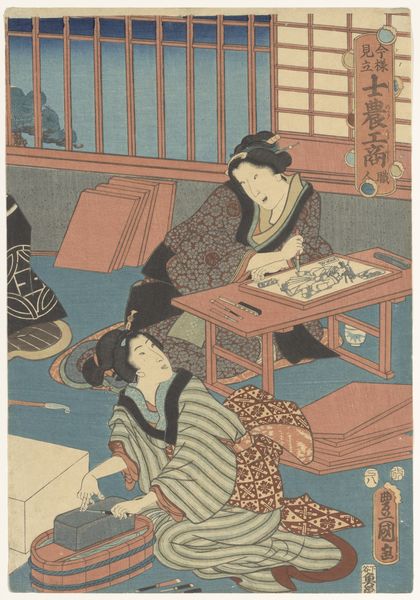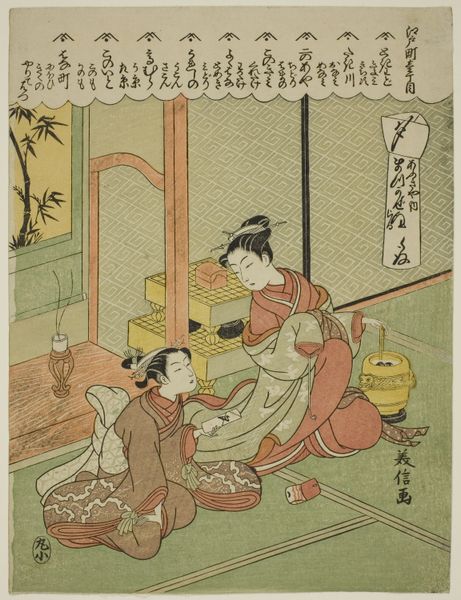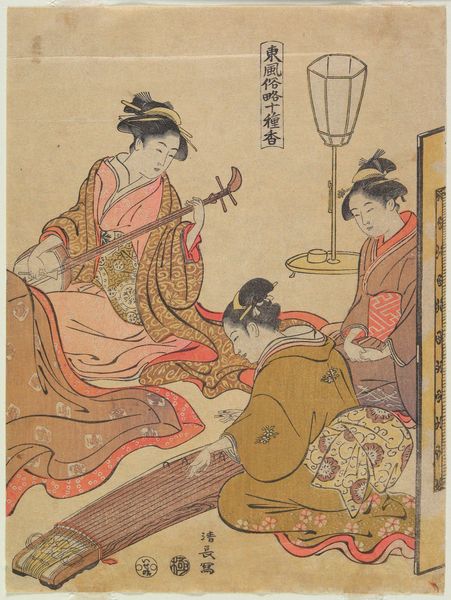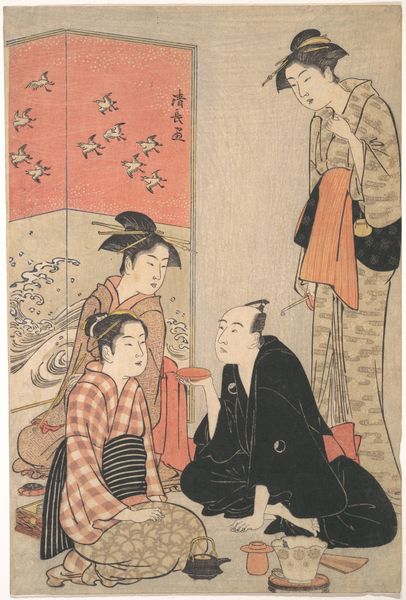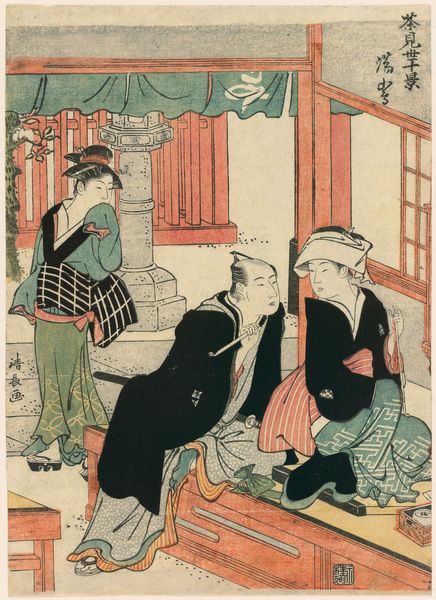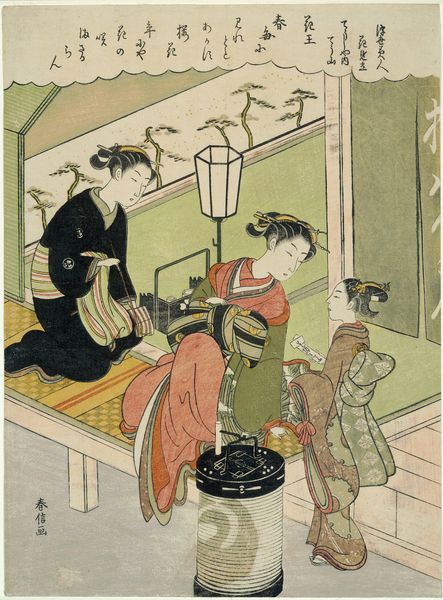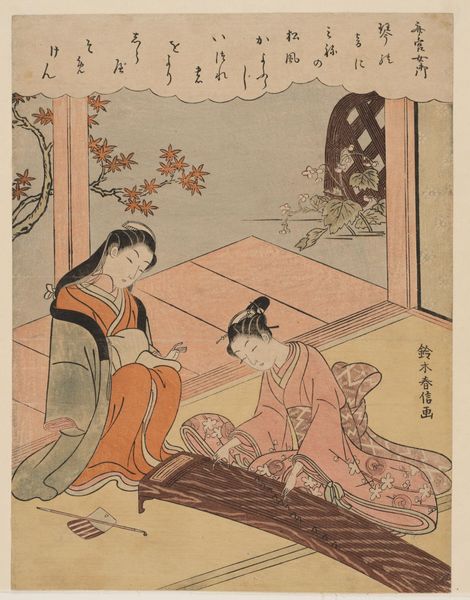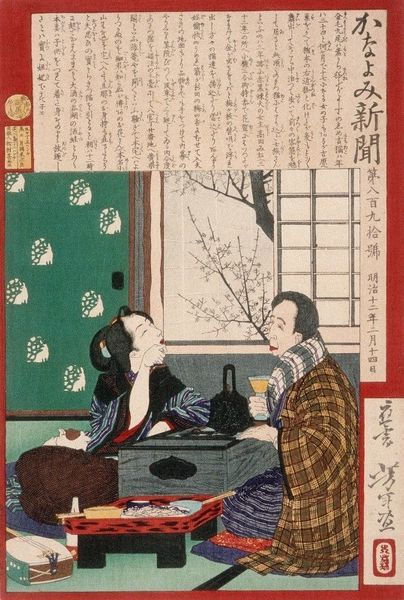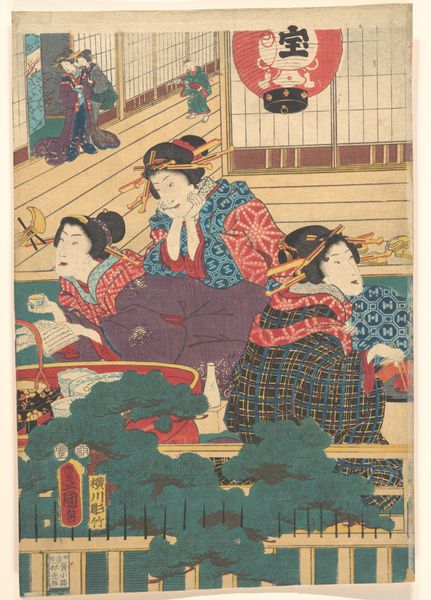
print, paper, ink, color-on-paper, woodblock-print
#
portrait
# print
#
asian-art
#
ukiyo-e
#
japan
#
figuration
#
paper
#
ink
#
color-on-paper
#
woodblock-print
#
watercolour illustration
#
watercolor
Dimensions: 13 11/16 × 9 5/8 in. (34.7 × 24.5 cm) (image, sheet, vertical ōban)
Copyright: Public Domain
Curator: This vibrant woodblock print, entitled "Actors Ichikawa Kuzo II" and attributed to Utagawa Kunisada, was likely created sometime between 1860 and 1869. It is part of the Ukiyo-e tradition. What stands out to you about it initially? Editor: It’s the drama. All these actors seem caught in a moment of intense emotion. The bright green backdrop and stark lighting almost amplify their expressions. Curator: Indeed. Utagawa Kunisada, a leading printmaker in 19th-century Japan, was particularly known for his actor portraits. Examining this work within the social context of the Edo period, kabuki theatre was immensely popular. These prints were not just art; they functioned as promotional material. Editor: So it's both documentation and promotion? The figures at the bottom—are they part of the stage setting or something more symbolic? Their body language feels so guarded compared to those above. Are they watching the drama unfold or perhaps plotting within it? Curator: That's a fantastic point. Given the prevalence of censorship during this period, Kabuki often served as a space to critique societal structures allegorically. These figures at the bottom could symbolize the observing public or even the forces of authority. This layered reading, blending performance and underlying commentary, gave Kabuki—and related prints—a powerful public role. Editor: And that heightened reality really emphasizes performance, power, and resistance through the language of theatre itself, a space that permitted commentary unavailable in daily life. It’s fascinating how art could reflect and shape socio-political consciousness. Curator: Absolutely. And within its context, understanding the performative, public function of Utagawa's design provides us an invaluable look into 19th-century Edo society and how Kabuki plays navigated the complex interplay between public spectacle and societal critique. Editor: Looking closer, it’s hard not to see in their dramatic presentation echoes of the struggles and tensions of the time. The layers here are so much richer than simple documentation. Curator: Precisely, giving "Actors Ichikawa Kuzo II" much more social relevance than initial impressions might imply.
Comments
minneapolisinstituteofart almost 2 years ago
⋮
This pentaptych which misses the first sheet (far right) is titled Assembly to Practice the Three Towers. Behind the stage, the most famous kabuki actors of the day are rehearsing scripts. They were written by the three renown playwrights referred to in the title as Towers: Segawa Jokō III (1806-81), Kawatake Mokuami (1816-93), and Sakurada Jisuke III (1802-77). Collectors of prints like this could easily identify the actors by their faces but not so much the playwrights, hence red cartouches with their names were placed besides them.
Join the conversation
Join millions of artists and users on Artera today and experience the ultimate creative platform.
